Kamal Amrohi, the legendary filmmaker
You are Here: Tweet, Like, Share, Comment, Subscribe…be the Voice of Free Press!
The India Observer, TIO: Kamal Amrohi, the legendary filmmaker, writer, & poet, achieved a cult status. With an eye for detail and an acute visual sense, Amrohi harnessed the full power of cinema to examine themes like prostitution, reincarnation, and adultery.
Syed Amir Haider Kamal Naqvi, popularly known as Kamal Amrohi, was born on January 17, 1918, in Amroha, Uttar Pradesh. He hailed from a Shia Muslim family and was a first cousin to Pakistani writers Jaun Elia and Rais Amrohvi. Kamal Amrohi’s early education was in Persian and Urdu, which he pursued at Oriental College, Punjab University, Lahore. His passion for writing and poetry was evident from a young age, and he began his career in the film industry as a story writer and dialogue writer.
Also Read, Tweet & Share: Film Review: Gaman (1978) Director: Muzaffar Ali
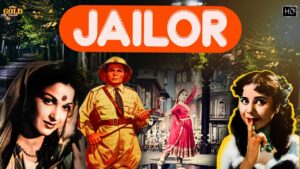
In 1938, he left Amroha to study in Lahore, where he met legendary singer K. L. Saigal, who took him to Mumbai (Bombay) to work for Sohrab Modi’s Minerva Movietoon film company, where he started his career working on films like Jailor (1938), Pukar (1939), and Bharosa (1940). He also wrote films like Prem Ki Jyot (1939), Main Hari (1940), Pagal (1940), Mazaaq (1943), and Romeo & Juliet (1947).
Two of the most important films of his career in this period were K. Asif’s Phool (1945) and A.R. Kardar’s film Shahjehan (1946).
The iconic film Mahal (1949), starring Madhubala and Ashok Kumar, marked the beginning of his illustrious career. The film, which has music by Khemchand Prakash, became a musical blockbuster, with songs by Lata Mangeshka (“Aayega Aanewala”) and Rajkumari Dubey (Ek Teer Chala Dil Pe Laga”).
Also Read, Tweet & Share: Saigal, Manto: The Legends of Bollywood

He directed only four films: Mahal, Daera, Pakeezah, and Razia Sultan. After Mahal he made “Daera (1953),” with Meena Kumari and Nasir Khan, about a 16-year-old girl forcibly married to an older man who falls in love with a teenaged neighbour. The movie includes the elements of his own love story with Meena Kumari. Although acclaimed as a film far ahead of its time, it proved a disaster at the box office.
The cinematic gem Pakeezah was conceived in 1958 but was not brought to the screen until 1972. It was Amrohi’s masterpiece, which is widely considered one of the greatest musical melodramas in Indian cinema. The film, according to Amrohi, his tribute to Meena Kumari, showcased his penchant for everything extraordinary as well as his poetic vision.
Also Read, Tweet & Share: Indian Cinema: A Growing Trend of Anti-Muslim Hate Movies
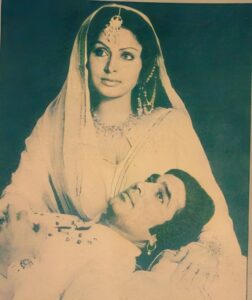
This was followed by his magnum opus, Razia Sultan (1983), his last film. Though he started a film, Majnoon, with Rajesh Khanna and Rakhee as leads, however, the film got shelved. It was mentioned that the last movie he wanted to make was called Aakhri Mughal. He had written a substantial portion of the script. But it went into oblivion after his death.
As a director, he developed a style that combined a stylised direction with minimalist performances. This style was different from the one with expressive acting that was common in Indian cinema of his period.
He was one of the four dialogue writers for Ka Asif’s Mughal-e-Azam, for which he won the Filmfare Award. He also wrote H. S. Rawail’s Saqi (1952″), starring Premnath and Madhubala; “Dil Apna Aur Preet Parai (1960), which he also produced; “Zindagi aur Khwab (1961); and the Pradeep Kumar starrer “Shankar Hussain (1977), which has the evergreen Rafi classic “Kahin ek masoom nazuk si ladki,” also written by him.
Also Read, Tweet & Share: Kapoors of Bollywood meet Modi
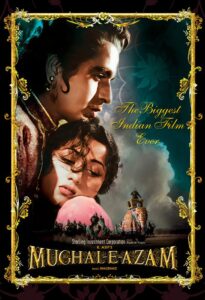 Kamal wrote the lyrics of Sohrab Modi’s Pukar (1939), which had the songs like “Zindagi Ka Saaz Bhi Kya Saaz Hai,” “Geet Suno Woh Geet Saiya,” & “Dil Me Tu, Aankho Me Tu, Saanso Me Tu.” For Pakeezah he wrote “Mausam Hai Aahiqana” and also cowrote “Thade Rahiyo” with Majrooh Sultanpuri.
Kamal wrote the lyrics of Sohrab Modi’s Pukar (1939), which had the songs like “Zindagi Ka Saaz Bhi Kya Saaz Hai,” “Geet Suno Woh Geet Saiya,” & “Dil Me Tu, Aankho Me Tu, Saanso Me Tu.” For Pakeezah he wrote “Mausam Hai Aahiqana” and also cowrote “Thade Rahiyo” with Majrooh Sultanpuri.
In 1958, he started Kamal Amrohi Studios (Kamalistan Studios). It continues to run, managed by Amrohi’s son and daughter, Tajdar Amrohi & Rukhsar Amrohi.
Amrohi’s first wife was Bilkis Bano, a maid of Jaddan Bai. After the early death of his first wife, he married Sayeda Al-Zehra Mehmoodi, a girl of his family’s choice, the mother of his three children, Shandaar, Tajdar, and Rukhsar Amrohi.
Also Read, Tweet & Share: The Kashmir Files – Bloodied and Gory, Sold out to RSS-BJP Agenda
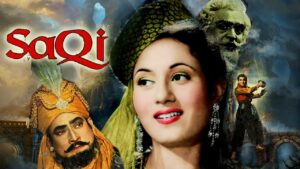
Kamal Amrohi’s most famous and tumultuous relationship was with actress Meena Kumari. They first met on the set of Tamasha, where actor Ashok Kumar introduced them. Kamal offered Meena a role in one of his films, but before the project could begin. In the meantime, Meena suffered a car accident and was hospitalised for months. During her recovery, Kamal visited her regularly, and they exchanged letters, which provided comfort to Meena during her difficult time.
They fell in love and had a secret nikah (marriage) on February 14, 1952, on Valentine’s Day, in a much more private ceremony. Only Amrohi’s friend Baaqar Ali and Meena Kumari’s younger sister Madhu were aware of this development.
Also Read, Tweet & Share: Zikr: In the Light and Shade of Time

They lived together for a total of 11 years; both have many common interests, but the problems started because of their very different personalities. Amrohi was very possessive and highly self-respecting; on the other hand, Meena ji was also very particular and highly successful; the whole world seems to be in awe of her. The tensions between the couple ultimately led to a mutual separation in March 1964.
Their relationship, however, was fraught with challenges. Reportedly Kamal became possessive of Meena and imposed strict rules on her, such as asking her to come home by 6:30 in the evening and not allowing anyone in her makeup room. There were also rumours of domestic violence, which Kamal denied. Meena Ji also never entertained such rumours.
Also Read, Tweet & Share: After ‘The Kerala Story,’ it is “Farhana” that’s an anti-Muslim movie
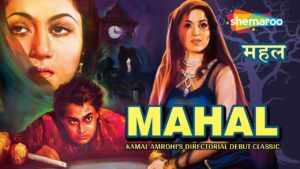
They reconciled in the last stages of her life for completing “film Mahal (1949),” which was completed and released in 1972. Meena Kumari passed away shortly after the film’s release, and Kamal Amrohi was deeply affected by her death.
Interestingly, they remain in love with each other despite their bitter separation and many so-called relationships of Meena Ji. Kamal Amrohi passed away on February 11, 1993, in Mumbai. He was buried next to Meena Kumari’s grave, as per his last wish.
Also Read, Tweet & Share: Hindutva apologists have stopped viewing the Tamil film ‘Annapoorani’
Kamal Amrohi’s artistic prowess extended beyond cinema, with a notable collection of Urdu poetry. Kamal Amrohi’s contributions to Indian cinema have left an enduring legacy. His films are celebrated for their poetic storytelling, innovative direction, and memorable music. His unique style, which combined stylised direction with minimalist performances, set him apart from his contemporaries. Kamal Amrohi’s enduring impact on Indian cinema cements his legacy as a visionary storyteller and cultural icon.
Curated and Compiled by Humra Kidwai
Source: Tasweer Mahal – All About Cinema




